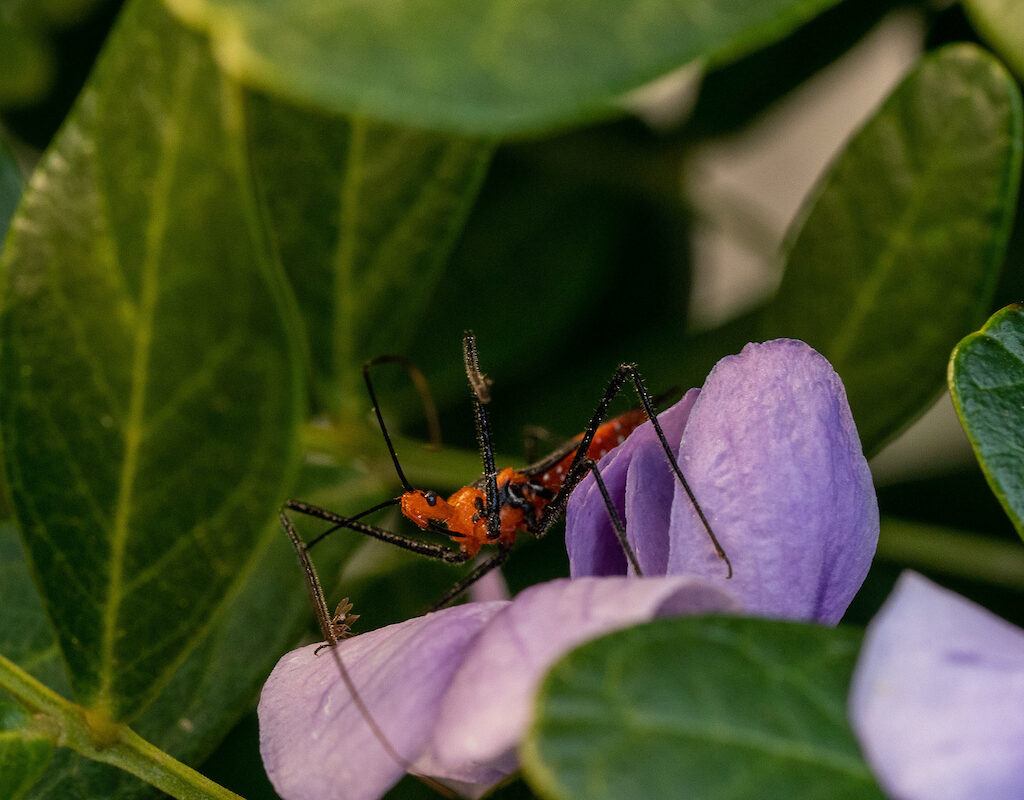Agrilife Extension Resources
We have a number of resources, fact sheets and publications to guide homeowners and professional applicators in the use of pesticides for pest management. From choosing the correct product to understanding its safety and storage needs, our specialists and educational resources are here to help.
Related Departments: Entomology

- Publication
This 7-page guide functions as an aid, primarily to school Integrated Pest Management (IPM) coordinators, to address the presence of feral hogs on school grounds.
- Publication
This fact sheet outlines Bt (transgenic) corn Insect Resistance Management strategies and requirements for Texas corn growers.
- Publication
This fact sheet provides a brief set of information regarding biology, damage, identification, scouting, and management options.
- Publication
This factsheet discusses emerald ash borer control, including when and how to apply insecticides, which insecticides to use, and how to mitigate nontarget effects.
- Publication
Going to the Texas coast? Whether you’re fishing, swimming, or just enjoying the Texas sun, our Vibrio Awareness factsheet can help keep you safe! Learn how to prevent, spot, and treat a Vibrio infection so your trip is memorable for the right reasons!
- Publication
Are muhlygrass mealybugs ruining your beautiful garden? Learn about these tiny pests, how to spot them, and the best ways to keep your muhly grass thriving. Don’t let mealybugs take over—get your factsheet today and protect your garden!
- Publication
This 4-page fact sheet discusses emerald ash borer in Texas and presents options to protect high value trees.
- Publication
Since the discovery in Harris County, Texas, in 2002, tawny crazy ants (Nylanderia fulva Mayr) have expanded their invasive range to include 43 Texas counties (Fig. 1). These ants have also been confirmed in Louisiana, Mississippi, Alabama, Georgia, and Florida. After an introduction to a new location, these ants can reach extraordinary densities within a year or two and become significant pests in urban, rural, and unmanaged natural areas. It is imperative that people remain diligent with regard to the potential transport of these ants across Texas and the United States.
- Publication
This Excel file has several spreadsheets that are designed to provide tools to aid in determining application rates and costs for herbicides, insecticides, and adjuvants (surfactants) commonly used in the management of pastures and hayfields. A PDF copy of the directions included on the first tab of the spreadsheet is also available for download here: […]
- Publication
These directions correspond with the Excel spreadsheet titled "Herbicide and Insecticide Cost Per Acre Spreadsheet" (ANSC-PU-430). The Excel file has several spreadsheets that are designed to provide tools to aid in determining application rates and costs for herbicides, insecticides, and adjuvants (surfactants) commonly used in the management of pastures and hayfields. (3 pages) Download the […]